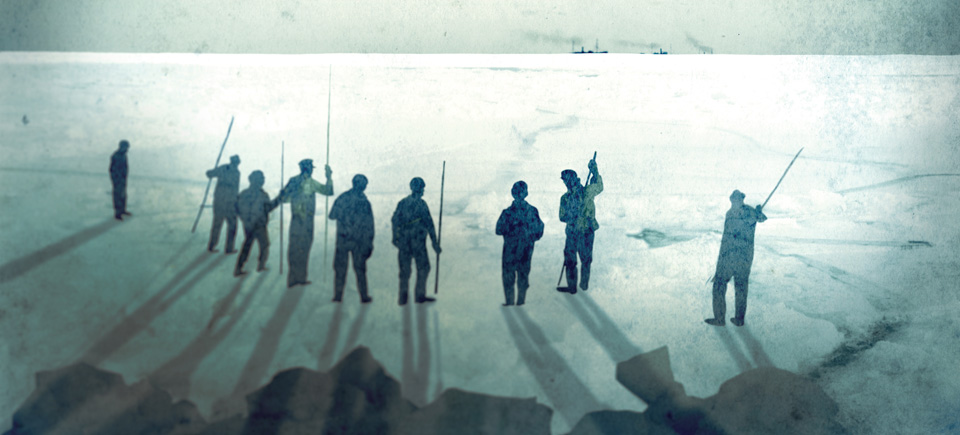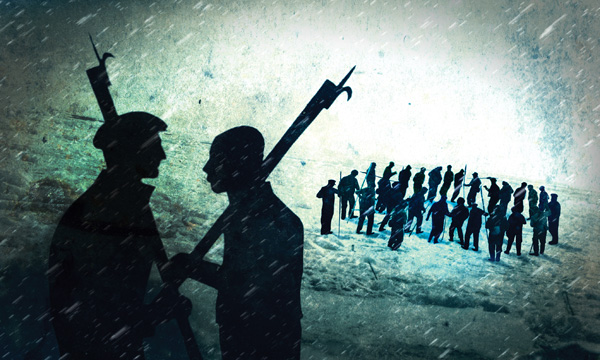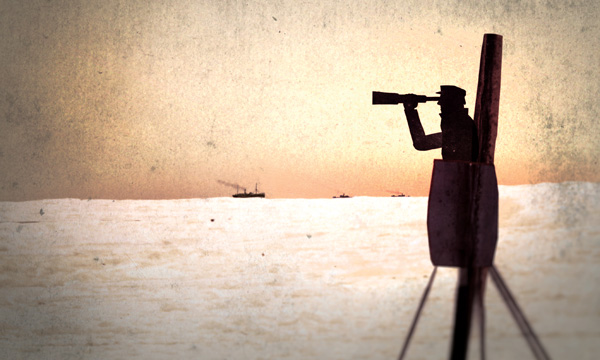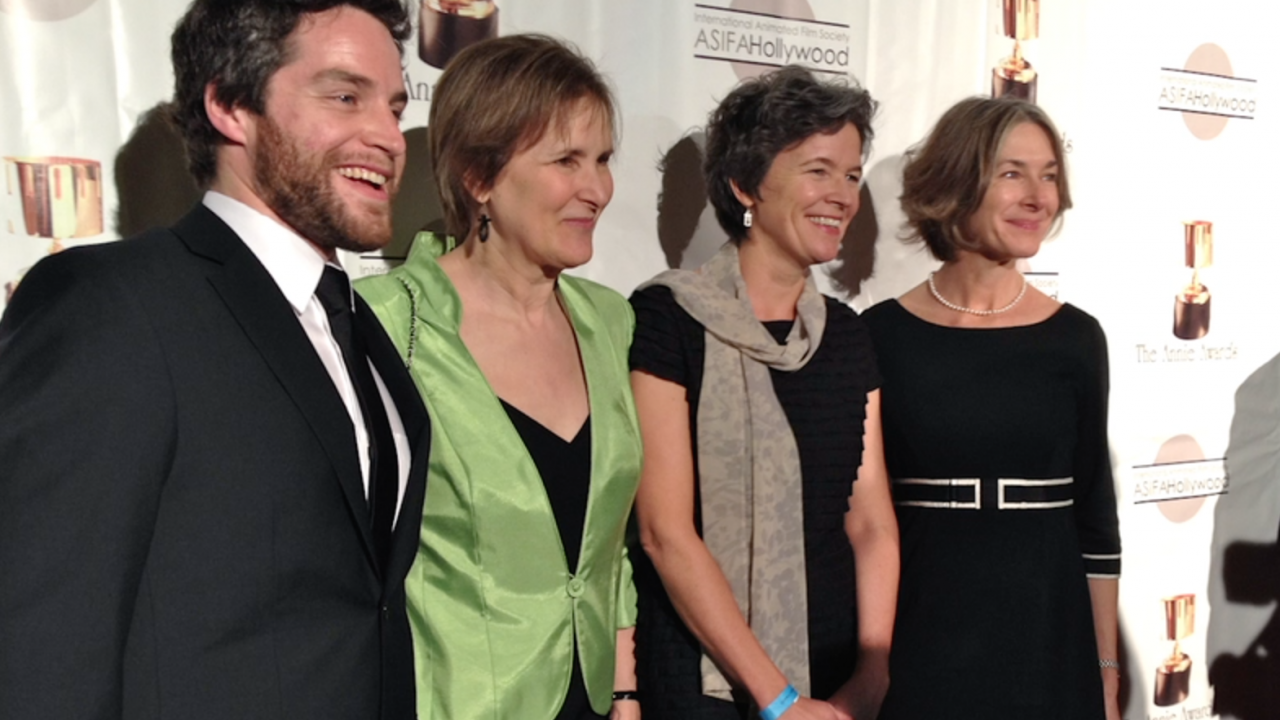
“54 Hours”: writing the Newfoundland sealing disaster
“54 Hours”: writing the Newfoundland sealing disaster
This is a guest post written by Michael Crummey. Michael is a Canadian poet and writer whose work often draws on the history and landscape of Newfoundland and Labrador. His debut novel, River Thieves (2001), was shortlisted for the Giller Prize. His poetry collections include Arguments with Gravity (1996), Hard Light (1998) and Under the Keel (2013). Michael is the writer of the forthcoming NFB short animated film 54 Hours, a vivid account of a 1914 tragedy in which 132 men were stranded on the ice during a severe snowstorm off the coast of Newfoundland.
***
NFB producer Annette Clarke first talked to me about a documentary on the 1914 Newfoundland sealing disaster at a St. John’s coffee shop called Gracie Joe’s. We were sitting directly across the street from Her Majesty’s Penitentiary. A generation ago, Gracie Joe’s had been a funeral parlour.
“What do you think? Annette asked.
The sealing disaster is one of the most iconic, and complicated, events in Newfoundland history. A voice in my head was already repeating, “say no, say no, say no.”
“Tell me more,” I said.
The documentary was to mark the 100th anniversary of the disaster. Among many other things, it involves a bloody (and controversial) industry; the exploitative working conditions of pre-industrial capitalism; a sealing crew caught on the ice during a once-in-a-generation storm; fateful bad luck and casual stupidity and callous disregard; acts of perseverance and sacrifice that beggar description; and the deaths of 78 men over the course of a 54-hour ordeal.

The film idea was pitched to Annette by Paton Francis, who has family connections to the disaster.
“The film is going to be 10 minutes long,” Annette said. “It’s going to be animated.”
“Say no,” the voice in my head said. “Say no, say no!”
Cassie Brown’s Death on the Ice is one of the reasons this event continues to occupy a central place in the psyche of Newfoundlanders. Without her book’s exhaustive investigation of the disaster and the people who suffered through it, most of us would know nothing about it today.
“I really want Cassie to be part of this,” Annette told me “She deserves a place in the film.”
And after letting it all sit a moment, she said: “So? Interested in writing the script?”
“Please,” the voice was begging me. “Please say no.”
“Sure,” I said. “I’ll take a shot at it.”
In the weeks that followed, it seemed obvious I’d made a huge mistake.
I re-read Death on the Ice, Paton and I trolled through transcripts of the official inquiry at The Rooms [1], and dug up Cassie Brown’s original interview recordings at the Centre for Newfoundland Studies. There was enough material to sink a sealing ship to the gunwales and only the tiniest fraction of it could be included in such a short film. Within the constraints of a short, animated documentary it seemed impossible to do more than trivialize the story.

But even before I left that first meeting with Annette, I’d begun toying with the idea of writing the script as an interview, a woman talking to someone who had lived through the disaster, years after the fact. It was a way of acknowledging Cassie’s work and it provided the perfect entry into the story. The first-person account forced me to focus on the experience of the men on the ice, leaving most of the tangly debate about causes and blame to one side.
Most importantly, it made 54 Hours a story about survival as much as it is about suffering and loss. And survival, for me, has always been at the heart of the sealing disaster’s enduring significance.
54 Hours will premiere on NFB.ca and stream for free in Canada starting on Monday, March 31st for a limited time. Click here to watch clips from the film before March 31st and the whole film on March 31st and afterwards.
[1] The Rooms are a cultural facility housing the Provincial Archives in St. John’s. For more information, visit http://www.therooms.ca/




I found this fascinating. Well done. The story has to get out.
My Grandfather was the firstmate on the SS Greenland and he spent three days on the ice with his charge of men. He was successful in keeping his men alive and was instrumental in helping others survive that storm.
I have an account that my Grandfather wrote after the disaster and the one thing that stands out in his story was after three days in the storm the weather cleared and they spotted the SS Greenland laid over on her side about seven miles away. During the storm in their effort to kick up chuncks of snow to make a bit of a shelter they came across a full grown seal and they stunned it by striking it on the nose. My Grandfather would not let the men kill the seal. He allowed the men to take turns laying on the seal to get body heat to keep every one alive. When the weather cleared and they could see the ship in the distance he then allowed the men to kill the seal for food which they had not had for quite some time. In the group of men with him they had a gross of matches. The old style that were about a foot long, typical of the day. They tried to get a fire going to cook the seal. The wind was blowing so hard that they could not get the fuel which was the ropes and gaff hook hanles burning. The owner of the matches said this is the last one and I am going to light my pipe with it, he was successful lighting his pipe and then they could get the fire started and cook the seal. After eating their fill and others that were still alive and could smell the smoke and food being cooked came toward the site. They then headed toward the SS Greenland picking up survivors as well as bodies. When they got back to the ship they had to right it before they could get underway to deliver the news to the devistated families alone the east coast of Newfouldland
The SS Greenland also lost 78 eight men.
My Grandfather had not turned 21 yet when this took place. He then wanted to get away from the sea so he emigrated to souther Manitoba to become a farmer as far away from the sea as possible.
Hello Murray,
I would really appreciate it if you could contact me. I have a painting of the First Mate of the S S Greenland and would like to confirm or otherwise if this man is your Grandfather.
Wow, unbelievable what those young men went through. I am proud to be the daughter of Newfoundlanders.
I would like to purchase this video as birthday present for my wife, whose grandfather was a fisherman in Newfoundland. Could you tell me the price and availability of this film. My wife and I both enjoyed Michael Crummey’s novel
Hi Stewart, thanks for your inquiry. As of now, 54 HOURS has not yet been packaged and released on DVD. If and when this happens, I will be sure to post an update here to let you know how you can purchase a copy. Don’t forget that the film is streaming for free online this week in Canada only, so feel free to share the link widely in your networks: https://www.nfb.ca/film/54_hours
Please let us know if this film will be available to viewers in the United States. Thank you.
Hi Amanda, as of now, we do not know if and when our viewers in the US will be able to see this film. I will post an update here as soon as that information becomes available.